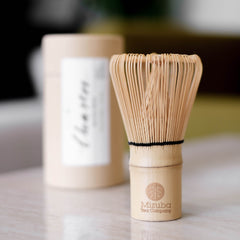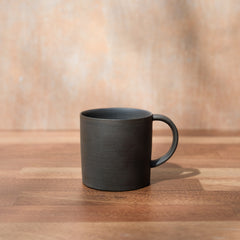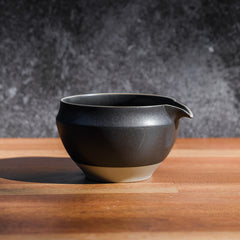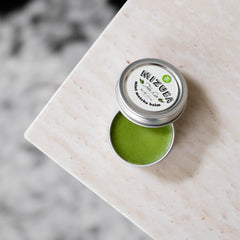Japanese green tea culture is an aesthetic in itself. Beyond the delightful flavors and nuances you can taste in tea lies another pleasure — tea ware! With so many glazes, shapes, colors, materials, and decorations, having your favorite kyusu or yunomi is essential to set the scene and perfect your tea ritual. And it has been for centuries – the people of Japan cherish ceramic production. Japan’s 47 prefectures are each known for their unique glazes, clays, and decoration styles.
Looking for a new piece to add to your collection? Read on to learn more about Japanese teaware and 9 fascinating Japanese ceramic styles to elevate your tea time.
What is a “yaki”?
Yaki translates to “grilled” or "cooked", but in terms of ceramics, it means fired in a kiln. With that said, when we describe different pottery styles as yaki, it's translated to “ware”. So Arita-yaki would simply mean Arita-ware.
What is a Prefecture?
Prefecture is another term you’ll see mentioned throughout this article. A prefecture is a subdivision of a country in charge of regional administration larger than cities, towns, and villages. Essentially, what we might think of as a county. Japan is divided into 47 prefectures, many of which are known for producing a distinctive style of yaki.
9 Popular Japanese Ceramic Styles
Tokoname-yaki (Aichi Prefecture)
Developed in Tokoname in Japan’s Aichi prefecture, Tokoname-yaki has been made since the 12th century. Tokoname was a fundamental piece of the domestic ceramics industry and the largest pottery production area of Japan’s Six Ancient Kilns.
We celebrate Tokoname ware for its brilliant brick-red clay called shudei. Shudei’s unglazed surface produces a mellow-tasting tea. Due to its high iron content, tea brewed in Tokoname ware is infused with iron. Mizuba Tea Co. sources several beautiful pots from Tokoname and it tends to be the region we focus on for most of our ceramic collection. (Here’s one of our favorites).
Bizen-yaki (Okayama Prefecture)
Another site of Japan’s Six Ancient Kilns, Bizen ware originates from the Bizen province, now a part of Okayama prefecture, Japan. It’s believed that Bizen has made pottery since the 14th century.
With a simple, rustic appearance, Bizen-yaki typically isn’t glazed because it’s difficult to spread on Bizen’s hiyose clay. Bizen ware instead has a beautiful reddish-brown color and natural designs from the effects of wood-burning kiln firing.
Hasami-yaki (Nagasaki Prefecture)
Developed in Hasami in 1598, in Nagasaki Prefecture, Hasami-yaki has a relatively recent origin. Before the turn of the 17th century, Japanese ceramics were fired in ascending hillside kilns and decorated with clay and water.
Porcelain gained popularity in the early 1600s, and Hasami quickly became Japan’s largest porcelain production area. Hasami ware is known for its white and transparent indigo porcelain embellished with blue gosu enamel.
Imari-Arita-yaki (Saga Prefecture)
Created around Arita town on Kyushu Island in Japan, Imari-Arita ware is globally renowned for its quality. Dated back to the 16th century, Imari and Arita were originally identical. The only thing separating them was their shipping ports. Imari-Arita-yaki's light, simple white body was often painted blue in admiration of Jingdezhen, China’s pottery.
Other variations of Imari-Arita ware with gold and red patterns became popular as time passed. Arita ware often referred to white and blue pieces, while Imari ware was for the more colorful ones. But in reality, Imari and Arita just describe the production location.
Agano-yaki (Fukuoka Prefecture)
Another relatively recent yaki, potters produced Agano ware near Fukuchi town, in Fukuoka prefecture. Agano-yaki began around 1602 when a lord and master of the tea ceremony brought a Korean potter to build a special kiln on the Agano hillside.

Credit: https://www.crossroadfukuoka.jp/
Agano ware is famous for its lightweight and elegant chawan, often used in tea ceremonies. Much traditional Agano-yaki was a lovely blue color. Today, you’ll find diverse patterns, lusters, and textures with blue-green, iron, white-brown, and transparent enamels.
Seto-yaki (Aichi Prefecture)
Seto town in Aichi prefecture is home to another of Japan’s Six Ancient Kilns. Pottery has been made there since at least the 13th century. Seto-yaki was a trailblazer in technology in the ceramic regions of Japan, known for producing the first-ever Japanese glazed wares.


With its intricate designs, Seto is currently one of Japan’s largest ceramics production center. Seto ware is distinguished by its distinctive white, unglazed pottery, dyed and designed with a famous indigo blue paint.
Hagi-yaki (Yamaguchi Prefecture)
Manufactured in Hagi town in Yamaguchi prefecture, this porcelain pottery dates back to the late 1500s. Some of the oldest Hagi pieces have even been declared National Treasures of Japan!
In the early 1900s, Hagi became a favorite for tea ceremonies because of its raw simplicity.
 Credit: Hagi Photo Database
Credit: Hagi Photo Database
Shigaraki-yaki (Shiga Prefecture)
Potters developed Shigaraki-yaki in the town of Shigaraki in Shiga prefecture. Said to originate as early as the 8th century, Shigaraki is another site of one of Japan’s Six Ancient Kilns.

Mizuba Tea's most classic chawan - we've sold this Shigaraki chawan since 2013!
As the tea ceremony became popular in the late 1500s, the production of Shigaraki ware tea utensils increased. Prized for its wabi-sabi aesthetic, Shigaraki ware clay is originally white, but it takes on a rusty glow and warm coloring when fired.
Mizuba’s first flagship chawan comes from the famed Shigaraki kiln!
Kyoto-Kiyomizu-yaki (Kyoto Prefecture)
Kyoto-Kiyomizu-yaki, also called Kyo-yaki, is produced in the Kyoto area with pottery traditions dating back to the 5th century. Originally, Kyoto ware was a generic term for any pottery created in Kyoto.
Like many other Japanese ceramics, production increased as tea ceremonies rose in popularity. Each kiln in Kyoto has its own traditions, but all are considered Kyoto-Kiyomizu ware. Kyoto-Kiyomizu ware is incredibly delicate with minimal color ranges as its pigments contain large amounts of glass.
Find Your Favorite Japanese Ceramics
The history of Japanese ceramics shows an appreciation for the beauty of simplicity and functionality. An overarching theme of purity and harmony shines through every aspect of Japanese tea culture. With so many distinct ceramic styles, Japanese teaware is an exciting world to delve into. We do our part at Mizuba by introducing you to our teaware inspired by the source.
By Mariah Bourne and Lauren Danson









Leave a comment